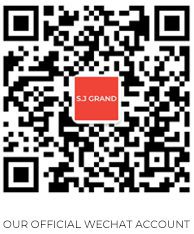In an unprecedented development that has sent shockwaves through the global luxury market, Chinese manufacturers and social media influencers have launched a coordinated campaign to undermine Western luxury brands by exposing their manufacturing origins and promoting direct-to-consumer alternatives. What began as a response to US tariffs has evolved into a broader movement with implications for luxury houses worldwide, from American brands like Lululemon and Calvin Klein to European icons such as Hermès, Chanel, and Louis Vuitton.
The Tariff Trigger and Beyond
The campaign gained momentum following the implementation of steep US tariffs on Chinese goods. In what has been characterized as a form of economic retaliation, Chinese manufacturers have taken to TikTok and other social media platforms to reveal that they produce goods for prestigious Western brands, which are then sold at significant markups in global markets.
“We’ve been scammed,” declare Chinese factory insiders in viral videos that have garnered millions of views. These posts blur the line between legitimate production relationships and counterfeit operations, inviting consumers to “cut out the middleman” by purchasing directly from the source at a fraction of the retail price.
More Than Just Economic Revenge
While the immediate catalyst appears to be the US-China trade tensions, the motivations behind this campaign run deeper:
National Pride and Recognition
For decades, Chinese manufacturers have operated in the shadows of global supply chains, contractually prevented from disclosing their clients through strict non-disclosure agreements. Now, with what some reports suggest is tacit approval from Chinese authorities to relax these agreements, factory owners are stepping forward to claim recognition for their craftsmanship.
“These are the same hands that make Chanel,” claims one TikTok video showcasing factory workers crafting handbags. Such declarations serve dual purposes: they legitimize the alternative products being offered while simultaneously diminishing the perceived exclusivity of the luxury originals.
The Profit Motive
Beyond politics and pride lies a straightforward commercial incentive. By positioning themselves as the authentic source behind luxury goods, Chinese manufacturers and wholesalers open direct channels to Western consumers, potentially capturing margins previously reserved for established brands.
A handbag retailing for $5,000 in Paris or New York might be offered directly from a Chinese factory for $500, with the seller claiming it’s “the exact same product” made in “the exact same factory.”
The Targeted Brands
The campaign has cast a wide net across the luxury landscape:
- American brands like Lululemon, Calvin Klein, Coach, and Ralph Lauren face particular scrutiny, likely due to the campaign’s origins in trade tensions.
- European luxury houses including Givenchy, Armani, Dior, Versace, Louis Vuitton, Hermès, Chanel, Gucci, and Prada are equally implicated, with social media videos alleging their goods are “just made in China with a fancy label.”
- Particular attention has been paid to iconic products like Hermès Birkin bags, with viral TikTok videos claiming to reveal “the truth” behind their five-figure price tags.
The Reality Behind the Claims
The campaign strategically exploits consumer misunderstandings about luxury manufacturing. While many luxury brands do have some production in China, particularly for specific components or entry-level products, the highest-end items—especially those from European heritage houses—are often made in their countries of origin under strictly controlled conditions.
For example, authentic Hermès Birkin bags are predominantly handcrafted in France by artisans who undergo years of training. Similarly, many Italian luxury brands maintain significant domestic production for their premium lines.
What the campaign often obscures is the distinction between:
- Legitimate contracted manufacturing, where brands maintain quality control and intellectual property rights
- “Gray market” manufacturing, where factories produce additional unauthorized units using similar materials
- Outright counterfeits that merely imitate the appearance of luxury goods
Consumer Response and Market Impact
The campaign has resonated with Western consumers already frustrated by rising luxury prices in the post-pandemic economy. Comments on viral TikTok videos often express sentiments like “The emperor has no clothes” or “We’ve been paying for the name all along.”
This growing consumer skepticism poses a significant challenge for luxury brands whose value propositions have traditionally rested on perceptions of exclusivity, heritage, and craftsmanship. If consumers come to believe that a $200 “factory direct” bag is identical to one retailing for $2,000, the fundamental psychology of luxury consumption comes into question.
The Geopolitical Dimension
While the campaign initially targeted American brands in direct response to US tariffs, its scope has expanded to include European luxury houses. This suggests broader geopolitical implications beyond the immediate US-China trade tensions.
Some analysts view the campaign as part of China’s longer-term strategy to reduce Western brands’ influence in both domestic and global markets. By undermining consumer confidence in established luxury names, the campaign potentially creates space for the emergence of Chinese luxury brands or a fundamental reshaping of global luxury consumption patterns.
Reports that Chinese authorities may be giving counterfeiters more leeway to target Western luxury goods further suggest state tolerance, if not tacit support, for these activities.
Government Orchestration and Control
A critical factor often overlooked in discussions of this campaign is the Chinese government’s comprehensive control over information and its dissemination within China, particularly on platforms like TikTok (known as Douyin domestically). Given this tight regulatory environment, the coordinated nature of these attacks on Western luxury brands strongly suggests government orchestration or, at minimum, explicit approval.
No sustained social media campaign of this scale could proceed in China without government sanction, raising questions about whether this represents an official economic strategy rather than merely grassroots commercial opportunism or nationalist sentiment.
Strategic Miscalculation?
The decision to target European luxury brands alongside American ones may represent a strategic miscalculation. By creating a narrative that pits Chinese manufacturers against Western luxury as a whole—rather than focusing exclusively on American brands—China risks a defensive response from the European Union, which has previously maintained a more measured stance on trade relations.
This two-front approach could prove counterproductive. If European policymakers perceive this campaign as economic hostility, it might trigger protective measures against Chinese exports to Europe—a crucial market for Chinese goods. Such a constriction would eliminate an alternative avenue for high-margin revenue generation precisely when tensions with the US are already limiting those opportunities.
The potential economic consequences for China could be significant: reduced export markets, manufacturing slowdowns, and subsequent employment challenges. These domestic pressures could create precisely the kind of economic and social instability Chinese leadership has worked diligently to avoid.
Furthermore, by antagonizing both American and European luxury interests simultaneously, China misses an opportunity to strengthen relations with the EU and potentially drive a wedge between Western allies—a strategy that might otherwise have yielded greater geopolitical advantages than the current approach.
The Future of Luxury in Question
As this campaign continues to gain traction, luxury brands face difficult questions about their value propositions, supply chain transparency, and consumer engagement strategies. The luxury industry has weathered challenges before—from economic recessions to changing consumer values—but this coordinated effort to undermine the very mystique upon which luxury marketing depends represents a novel threat.
For Western luxury houses, the path forward may require greater transparency about manufacturing origins, clearer articulation of why their products command premium prices beyond the label, and possibly reconsidering their relationships with Chinese manufacturing partners.
Meanwhile, consumers navigate an increasingly complex marketplace where authenticity, value, and status are in flux—forced to question whether that coveted designer item is worth its price tag, or if they’re simply paying for an illusion that Chinese manufacturers are now all too eager to dispel.
A Shifting Paradigm of East-West Relations
What began as a targeted response to US tariffs appears to be evolving into something broader—a general economic animosity toward Western luxury brands that could reshape international trade relationships. This shift contradicts recent analyses suggesting that US policies might inadvertently position China as “the best friend of the EU.” Instead, by targeting European luxury houses alongside American brands, China risks alienating potential allies and consolidating Western economic opposition.
The question remains whether this represents a calculated strategy or an overreach that could backfire economically. If European markets join the US in implementing protective measures against Chinese imports, the resulting constriction could trigger significant domestic challenges for China—from manufacturing slowdowns to rising unemployment—precisely when global economic conditions demand stability.
Whatever the outcome, this unmasking campaign marks a significant shift in the power dynamics of global luxury commerce—one that may permanently alter how these goods are perceived, produced, and consumed worldwide. It also serves as a stark reminder that in today’s interconnected global economy, what begins as a bilateral trade dispute can quickly expand into multi-polarity with consequences reaching far beyond the original participants.

President | S.J. Grand Financial & Tax Advisory
Latest Articles:
- China’s New AI Labeling Rules Take Effect: A Step Toward Transparent AI Content
- Shanghai Launches Maternity Leave Subsidy to Support Working Mothers
- The Complete Guide to Sourcing from China: Your Path to Business Success
- Amendments to China Anti-Unfair Competition Law 2025
- China’s R&D Super Deduction Policy






